
12 minute read
TEACHING THE ART OF REDRAFTING AND EDITING
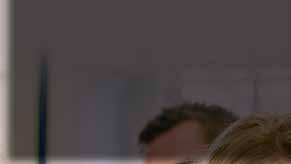
TEACHERS AS EXPERTS
Advertisement
Outlining the above may sound patronising, however it does happen. And this is why I think it happens: teachers, who we can think of as experts, particularly in things such as adding and dividing numbers in fairly simple equations, often fi nd it di cult to recognise how much new learning needs to be broken down for the learner. This is not because they are bad teachers, rather that they are experts and know how to do something without even really having to put much thought into it.
As teachers, when planning and preparing our teaching, we must remember that there is a lot that children don’t know, that they are novices, and that if we want them to learn new things, we need to model those new things carefully and thoroughly in order to give them the best chance of being successful.
So what might we need to change?
PLANNING FOR MODELLING
As already mentioned, this starts at the planning stage. At this point, when sitting in your PPA session, you must be thoughtful about what the children know already, what they don’t know yet and how you are going to break down what they don’t yet know into bite-sized chunks.
The next step then is to use some of your precious planning time to work out what you are going to say and what you are going to do to show children how to be successful in this new learning, taking into consideration the concept of 2-dimensional modelling (content and procedure). Although it takes quite a lot of time, it really is worth doing. You will reap the benefi ts when, in the classroom, you don’t have to repeat your explanations time and time again to children who have not understood the content or the procedure.



PEDAGOGY
MAKING TEACHING DECISIONS

Once your explanations and models are planned it remains for you to use them in the classroom. And this is where even the best intentions can fall fl at. Everybody knows that the school day is busy and changeable and often things happen outside of a teacher’s control, meaning there is not enough time to get through everything that has been planned. It is at this point that we must respond by thinking about which of the lesson’s components must remain and what can be left out. Explanations and modelling must not be cut; teachers should persevere with doing a good job of these two aspects as without these, moving to practice time for children will result in them being unable to complete the work.
Actually, it’s the practice time that will have to go. If this is the case, then you will need to make sure that the next lesson begins with a recap and perhaps further modelling, but that it is then given over to the practice time that children missed in the previous lesson.



This can be anathema to the teacher who still feels that a lesson should contain three parts and should all fi t neatly into the timetabled slot for that subject. For teachers who do not see learning as a sequence but only see a succession of self-contained lessons, this will require a greater change of mindset. Also for those who are held to account for the amount of written work, or recorded work, in each lesson, this will present di culties.

MODELLING IN ALL SUBJECTS OF THE PRIMARY CURRICULUM
Another issue that presents in primary schools is that in certain subjects modelling is not given the same precedence as it is in say, maths and English. There are several reasons for this, such as:
• the aforementioned lack of time in a squeezed timetable where many di erent curriculum subjects are vying for attention;
• teachers’ own levels of expertise in subjects that they are not specialists in mean that they are less confi dent to model for example, the necessary brush stroke techniques that impressionist artists used; • logistical problems such as modelling the procedures involved in sawing a piece of wood at an angle to a class of 30 children at once.
It goes without saying that modelling needs to be an important part of all teaching across the curriculum. In these wider curriculum subjects, it is probably even more important to model the processes, as they are typically practised less often. For example, a child will spend more time practising punctuating their sentences properly than they will using a compass or a map in geography.
MODELLING AT THE CENTRE OF TEACHING AND LEARNING
Whatever your pedagogical views are, it’s hard to deny the importance of modelling. From the most hardcore of direct instruction proponents, to the staunch devotee of discovery learning, modelling the what and how will always be essential to a teacher’s role. We therefore need to ensure that it is given the time that it deserves.

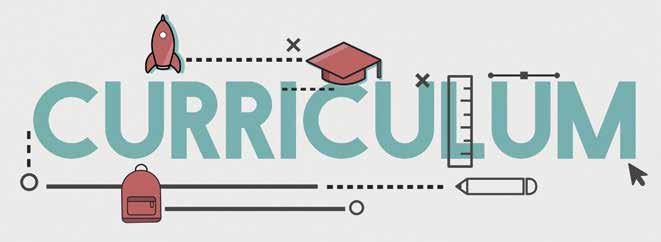
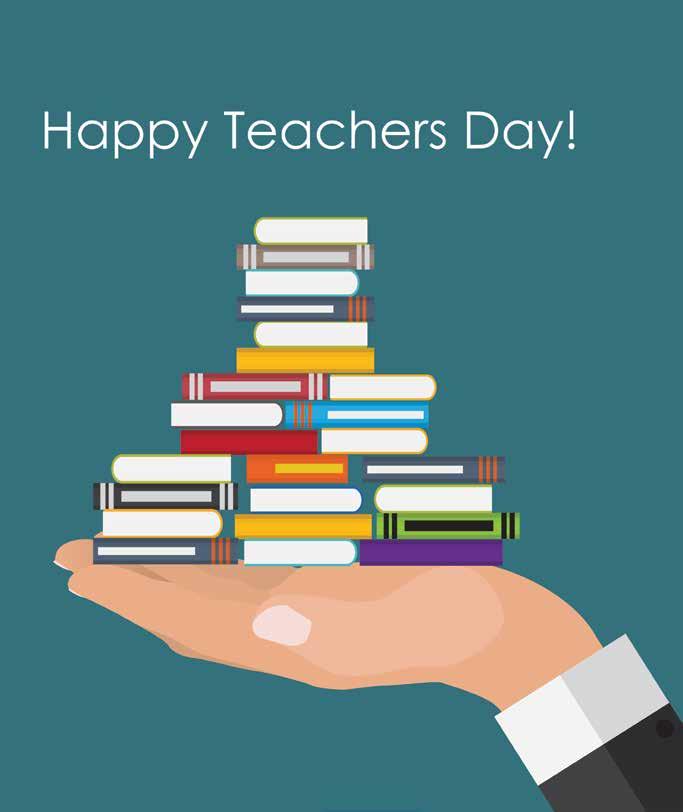
EXPAND YOUR MIND ONE SUBJECT AT A TIME
40. Viewing The Curriculum As A NeverEnding Story
Curriculum is the one job that is never truly finished, so how should we approach it?
45. Learning The Language Of Mathematics
Why a common mathematical language for students and staff is vital for success.
48. Let’s Toark Abought Spelling: Palt Tough
The second installment of Neil Almond’s series on the science of teaching spelling.
52. The Case For Classics
How we can weave Classics into our lessons and why we should do so.


VIEWING THE CURRICULUM AS A NEVER-ENDING STORY
Curriculum design can be a daunting and intimidating task for even the most expert subject leader. In this article, Mary Myatt breaks down the fundamentals of curriculum design so Middle and Senior Leaders can approach it with confi dence and clarity.
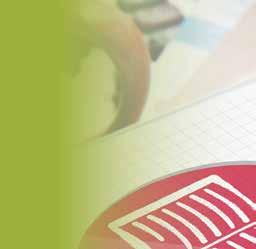
By Mary Myatt


There’s a tendency to want to get things absolutely spot on, so here are some suggestions by way of reassurance:
One: there’s no need to have everything in place for us to get cracking. Sometimes, there’s a reluctance to make a start until all the plans are written up. As long as there’s an overview in place, there’s no need to have all our ducks in a row before we make a start. The likelihood is that we are going to adjust the plans in the light of experience. Beginning, as Churchill said, is half done.
Two: The plans are never more important than the pupils in front of us. There can be a temptation to plough on regardless, even if something isn’t working and if pupils haven’t truly grasped something. The plans are there to support teaching, not dictate it. If pupils are not learning what we intend, we need to adjust. Which leads to:
Three: We need to beware the ‘curse of content coverage’. It can feel as though there is an awful amount to be taught. But if our plans are not underpinned by concepts and big ideas, it is hard for our pupils to make connections. As Stephen Pinker says ‘disconnected facts are like unlinked pages on the web: they might as well not exist’. Ploughing through the content is not a sufficient guarantee that pupils have learnt that content unless they are able to make connections.
Four: Light touch assessments need to gauge whether what we have taught has been learnt. What we teach should be more important than mapping against multiple key performance indicators, which mostly don’t tell us anything and which can affect what we teach in order to turn our pupils ‘green’.



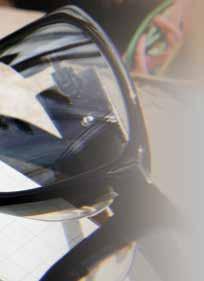

Five: The curriculum is a never-ending story. Lots of colleagues are saying that they are not as far ahead as they would like to be on their curriculum journey. That will always be the case: there will always be something that we want to refine, ditch, add depth to. We need to enjoy the fact that curriculum is never-ending. What we are offering right now is probably good enough and it will take time for it to get better. As Andrew Percival says ‘we need to create a curriculum culture in schools’ which means we relax into the idea that curriculum work is a living, breathing process. There’s more on the free curriculum primary webinar.
Here are some of the things John Tomsett and I found when we spoke to secondary subject leaders about the curriculum in their schools: it can be hard for senior leaders because the terminology to discuss the curriculum can be intimidating; they feel that they don’t know enough about curriculum design; they might not have a thorough knowledge of the subjects they line manage.
These are some of the things we have picked up from conversations with subject leaders: they often feel that they have to reinvent the whole curriculum; they do not always have the resources they need to shape the ideal curriculum they envisage; they are sometimes given unrealistic deadlines for completing curriculum development work by senior leaders who do not know their subjects.
So, we thought it would be a good idea to explore this space. And we did it by having conversations with terrific subject leaders. We argue that the onus is on the senior leaders to make the time and space to get to know the headlines of the subjects they line manage. And to do this, they need the support of subject leaders.





In the sessions we recorded, the subject leaders were asked by John what they expected a student to know, understand and do by the end of key stage 3 if they had experienced a really rich, interesting and demanding curriculum. John then asks them how they get pupils started in Year 7. These are John’s question prompts:

• With a class of Year 9s in front of you, if you have taught them a rich, challenging curriculum, what does success look like in terms of what those students know, understand, and can do in your subject?

• If that is your destination, where do you begin in Year 7 and how do you build up to that point?
• What would you like your senior leader line manager to know about your subject?
And this is what we found:
One: That subject leaders are delighted to have the chance to talk about their subjects: a proper conversation about the ‘stuff’ they plan for their students.
Two: That individual subjects make a unique contribution to learning and all those we spoke to were clear that their subjects add value to lives beyond the formal curriculum.
Three: The subject leaders were clear that key stage 3 was much more than ‘mini key stage 4’ and there are real opportunities here for subjects to treat key stage 3 as the intellectual powerhouse of the secondary phase.
Four: We shouldn’t be intimidated by some of the tremendous teachers and speakers who make us feel this language and understanding is normalised. Only a minority of existing middle leaders have the language being used commonly about curriculum theory and so it needs a steady, pragmatic approach if we are to meet middle leaders where they are.
Five: As Claire Hill says ‘When you think about the vocabulary you use when discussing the curriculum with subject leaders, we need to be sensitive to the individual subject leader’s knowledge levels. It is all too easy to use curriculumrelated vocabulary that intimidates colleagues. Across any school or trust there will be a significant variation in terms of where different departments are in understanding how to develop their curriculum. Whilst you might have some common language around core knowledge, hinterland knowledge and disciplinary knowledge etc., how you address that in different subjects varies depending on where that subject is in developing their curriculum.’
In summary
• Our subject takes students beyond qualifications – we are educating them for life
• If the curriculum is so important, then we need time for collaborative curriculum development
• Developing the curriculum is intellectually rewarding work
• We are not developing the curriculum for the regulator – we are developing the curriculum for our students
• The principles of each subject apply to primary and secondary
• Curriculum development is a never-ending process.
And that’s why we have called our book ‘Huh’ named after the Egyptian god of everlasting things.
You can watch a recording of John and Mary’s webinar here via the free membership.










